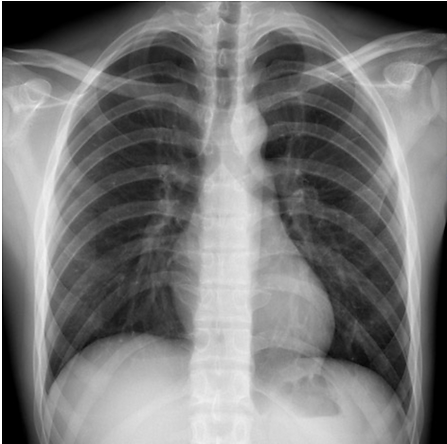Central Lines
A central line is a catheter inserted into a central vein for the purpose of drug delivery, blood sampling, haemodynamic measurement and renal filtration.
Types of central access include:
-
CVC
-
Internal jugular vein
-
Subclavian vein
-
Femoral Vein
-
-
Peripherally inserted central catheter (PICC)
-
Vascath
-
Similar positioning to CVC
-
Utilised for renal replacement therapy
-
May be used as central access device if required
-
Usually 'Hep-locked' - small volume (1.5ml) of heparin left in catheter to prevent clotting between use
-
Must be aspirated prior to use
-
-
-
Confirming Central Line Position on CXR
-
What type of central line?
-
Internal jugular vs subclavian vs PICC
-
Femoral lines do not need confirmation on CXR
-
-
Where is the central line?
-
Right sided – NEVER crosses the midline/mediastinum
-
Left sided – ALWAYS crosses the midline/mediastinum
-
-
Tip Position
-
Tip ideally sits around the level of the carina (+/- 1 cm)
-
Tip not greater than ~1.5cm above carina
-
Do NOT push in further (this is never done once line is secured and operator has un-scrubbed) - external component is no longer sterile
-
Can often still be used even if tip is sitting too distal; check with ICU registrar/consultant prior to use
-
-
Too far in?
-
If tip is more than 1-2cm distal to carina or it curves, it may be too far in
-
Check with ICU registrar/consultant - it may need to be withdrawn a few centimetres prior to use
-
-
-
Check for complications
-
Pneumothorax / Pneumomediastinum
-
Highest risk with subclavian insertion
-
-
Kinked or line looped around itself
-
Subcutaneous emphysema
-
Retained guidewire
-
SHOULD NOT REQUIRE A CHEST XRAY
-
-






Images from radiologymasterclass.co.uk
Author: Dr. Kirsty O'Keefe, Peer Reviewer: Dr. Irma Bilgrami Date: 22/03/20